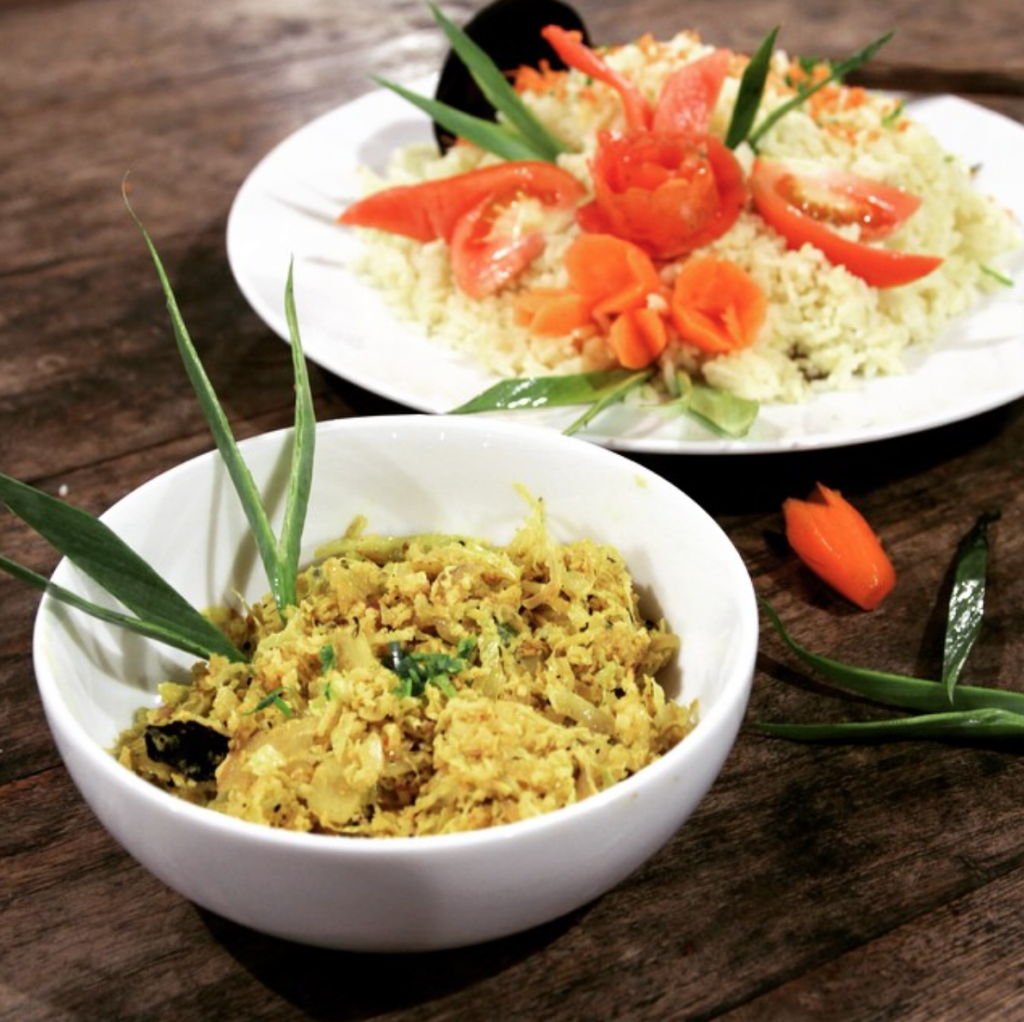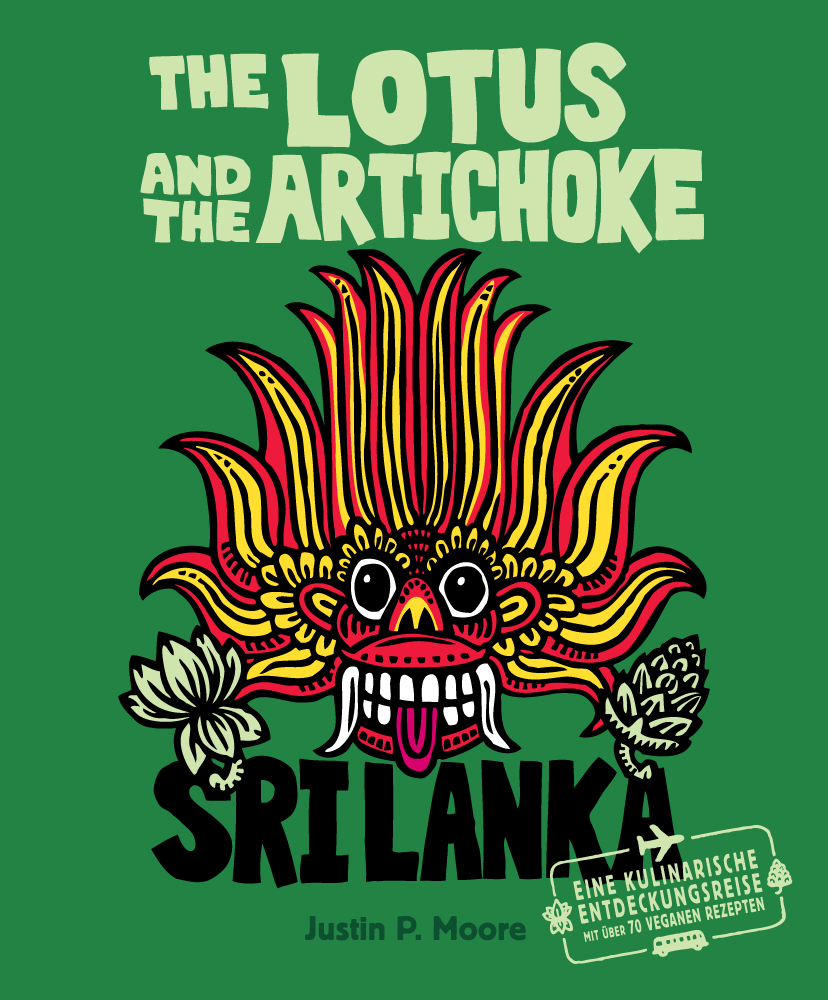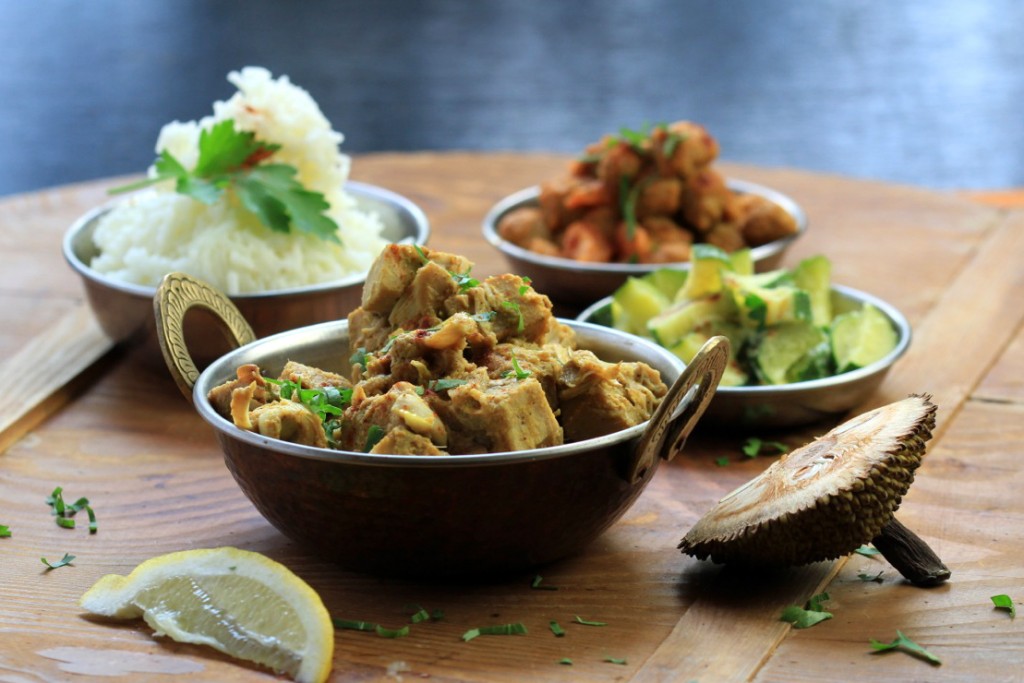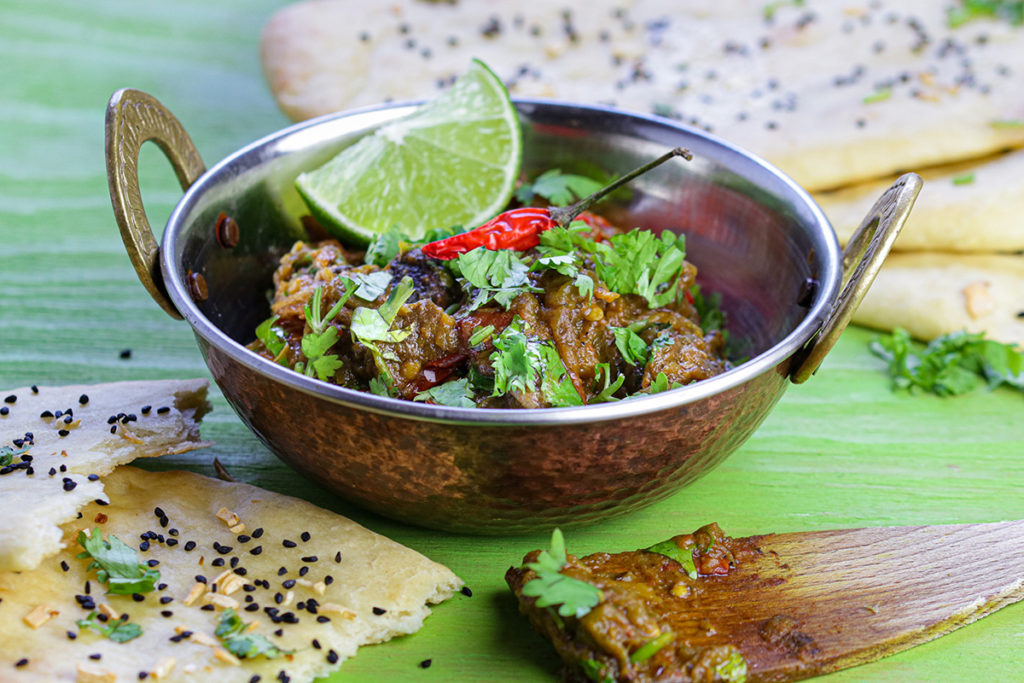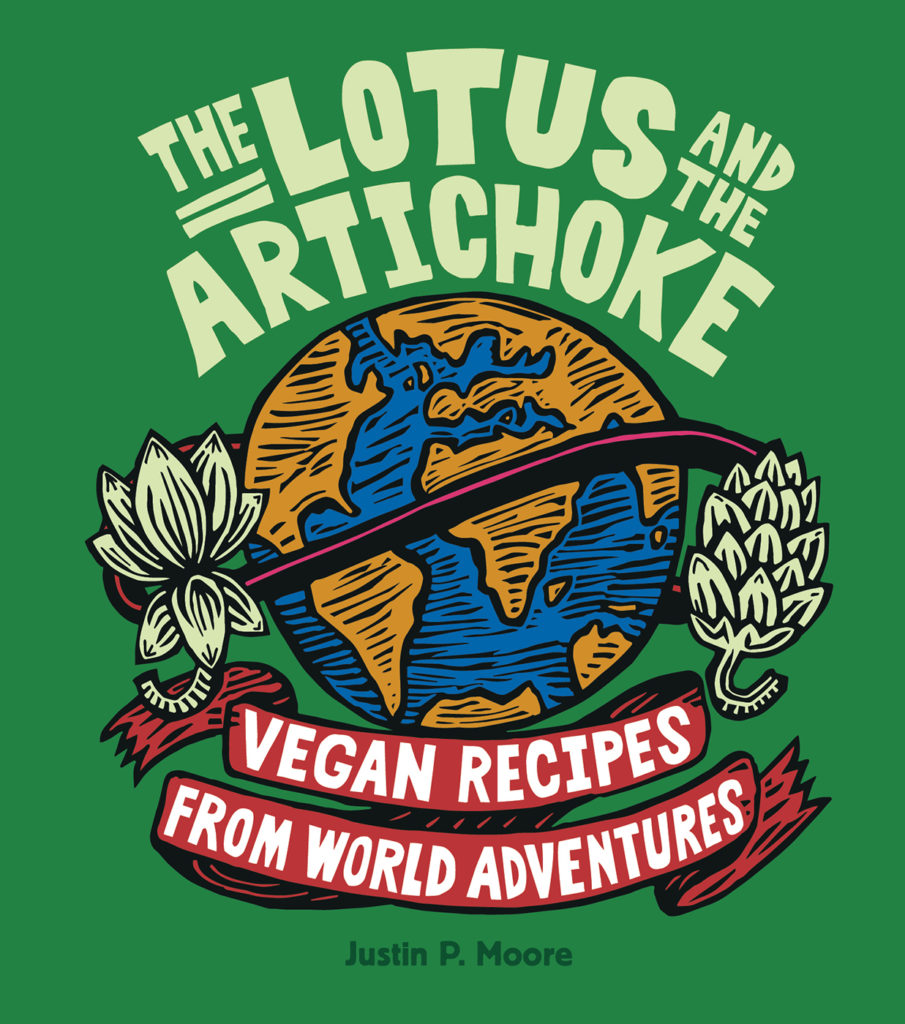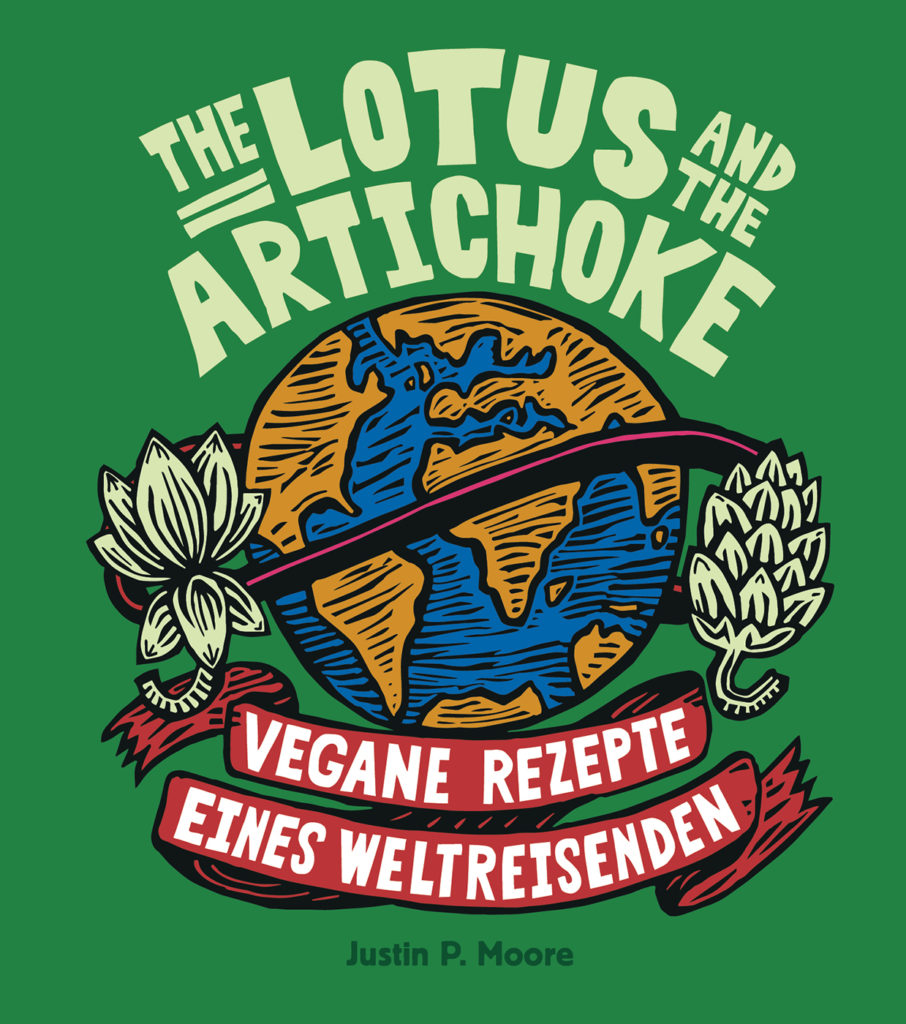Just one week into my ten weeks of travels through Sri Lanka, I had the opportunity to go in the kitchen at Mango Garden in Kandy, Sri Lanka to help prepare the New Year’s Eve dinner. The head cook showed me how to make a number of amazing vegetarian (vegan) Sri Lankan curries and dishes, including this one. I also learned how to make Pol Sambol for the first time, always awesome Beetroot Curry, fantastic Leek Curry, Dal Curry (of course), Green Bean “Bonchi” Curry, and Snake Gourd Curry (which can be made with any squash, such as Zucchini.)
I’ve made this dish dozens of times with many different types of cabbage.
Regular cabbage works great, but one of my favorites is with German Wirsing – Savoy Cabbage. In fact, I just made it twice this last weekend in Munich at the dinner parties and cooking class with my world-traveling vegan cookbook author friend, Surdham Göb. Next to Jackfruit Curry, this Sri Lankan dish is always a big hit with everyone. It’s easy to make and super tasty. In the photo above, I prepared the cabbage curry with large pieces, but below you can see the curry with finely chopped cabbage. Combined with fresh shredded coconut, this dish is insanely great. You can also use dried grated (desiccated) coconut, and I recommend soaking it in warm water for about 10-20 minutes first, then pressing excess water out.
Of course, we are always the most satisfied when those we love compliment our efforts and accomplishments. Not only have lots of friends, dinner party guests, and new fans at cooking demos and other events enjoyed this Cabbage Coconut Curry… the best moment for me came when I got an email from my brother Adam, after he made this dish with his first ever Sri Lankan vegan dinner feast for his family. I’d sent him the cookbook, and this dish was the first recipe he whipped up. The kids loved it, and he even sent me some photos of the meal. It was a great feeling. And now it’s time to share the recipe with you!
Gowa Mallum
cabbage & coconut curry
serves 3 to 4 / time 30 min
- 1 small head (350 g) cabbage chopped
- 1 small red onion chopped
- 1 clove garlic finely chopped
- 1 small red or green chili pepper seeded, finely chopped optional
- 1–2 Tbs coconut oil or vegetable oil
- 1 tsp black mustard seeds
- 1/2 tsp curry powder
- 1 tsp cumin ground
- 1/2 tsp coriander ground
- 1/4 tsp black pepper ground
- 1 tsp turmeric ground
- 1–2 small pieces cinnamon bark or pinch cinnamon ground
- 6–8 curry leaves
- 1/2 cup (120 ml) coconut milk
- 2–3 Tbs grated coconut
- 1 Tbs lime juice or lemon juice
- 1 tsp agave syrup or sugar
- 3/4 tsp sea salt
- Heat oil in a medium pot on medium heat. Add mustard seeds. After they start to pop (20–30 sec), stir in chopped onion, garlic, chili (if using), curry powder, ground cumin, coriander, black pepper, turmeric, cinnamon, and curry leaves. Fry until onion begins to soften, stirring constantly, 3–5 min.
- Add chopped cabbage and grated coconut. Mix well. Cook, partially covered, stirring regularly, 2–3 min.
- Add coconut milk, lime (or lemon) juice, agave syrup (or sugar) and salt. Stir several times. Reduce heat to medium low. Simmer partially covered, stirring regularly, until cabbage has shrunken and softened,10–15 min. While cooking, gradually stir in more coconut milk, as desired, for a creamier curry.
- Remove cinnamon bark before serving. Serve with other curries and rice.
Variations:
Spicy Red: Add 1/2 tsp chili powder (or ground paprika) and 4–6 chopped cherry tomatoes along with cabbage. Extra Fine: Finely chop cabbage and onion. Reduce simmering time as needed. Orange: Add grated or finely chopped carrot along with coconut milk for last stage of simmering.
Gowa Mallum
Weißkohl-Kokos-Curry
3 bis 4 Portionen / Dauer 30 Min.
Rezept aus The Lotus and the Artichoke – SRI LANKA
- 1 kleiner Kopf (350 g) Weißkohl klein geschnitten
- 1 kleine rote Zwiebel gehackt
- 1 Knoblauchzehe fein gehackt
- 1 kleine rote oder grüne Chilischote entsamt, fein gehackt wenn gewünscht
- 1–2 EL Kokos- oder Pflanzenöl
- 1 TL schwarze Senfsamen
- 1/2 TL Currypulver
- 1 TL Kreuzkümmel gemahlen
- 1/2 TL Koriander gemahlen
- 1/4 TL schwarzer Pfeffer gemahlen
- 1 TL Kurkuma gemahlen
- 1–2 kleine Stückchen Zimtrinde oder 1 Prise gemahlener Zimt
- 6–8 Curryblätter
- 1/2 Tasse (120 ml) Kokosmilch
- 2–3 EL Kokosraspel
- 1 EL Limetten- oder Zitronensaft
- 1 TL Agavensirup oder Zucker
- 3/4 TL Meersalz
- In einem mittelgroßen Topf Öl auf mittlerer Flamme erhitzen. Senfsamen hineingeben. Nach deren Aufplatzen (nach etwa 20 bis 30 Sek.) Zwiebel, Knoblauch, Chili (wenn verwendet), Currypulver, gemahlenen Kreuzkümmel, Koriander, schwarzen Pfeffer, Kurkuma, Zimt und Curryblätter zugeben. 3 bis 5 Min. unter Rühren anbraten, bis die Zwiebel weich wird.
- Klein geschnittenen Weißkohl und Kokosraspel einrühren. Halb abgedeckt unter regelmäßigem Rühren 2 bis 3 Min. garen.
- Kokosmilch, Limetten– oder Zitronensaft, Agavensirup (oder Zucker) und Salz hinzufügen. Mehrere Male umrühren. Flamme niedrig stellen. Halb abgedeckt unter regelmäßigem Rühren 10 bis 15 Min. köcheln lassen, bis der Weißkohl zusammengefallen und weich ist. Für ein cremigeres Curry während des Köchelns nach und nach je nach Vorliebe mehr Kokosmilch unterrühren.
- Vor dem Anrichten die Zimtrindenstückchen entfernen. Mit Reis servieren.
Variationen:
Rot & scharf: 1/2 TL Chili- oder scharfes Paprikapulver und 4 bis 6 halbierte Cherrytomaten zusammen mit dem Weißkohl zugeben. Extra fein: Weißkohl und Zwiebel sehr fein hacken. Kochzeit entsprechend anpassen. Orange: Gegen Ende der Kochzeit 1 geraspelte oder fein gehackte Möhre zusammen mit der Kokosmilch einrühren.



